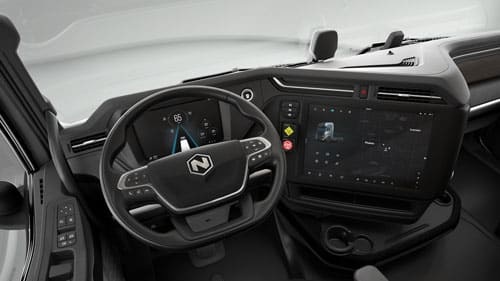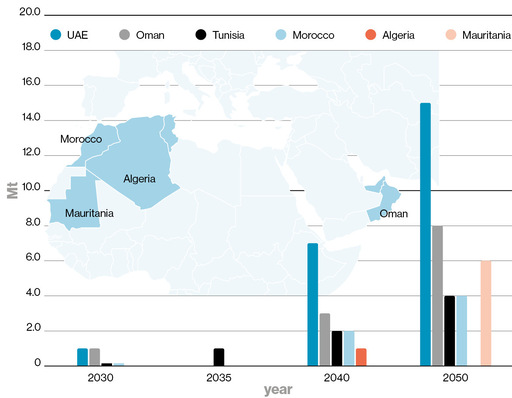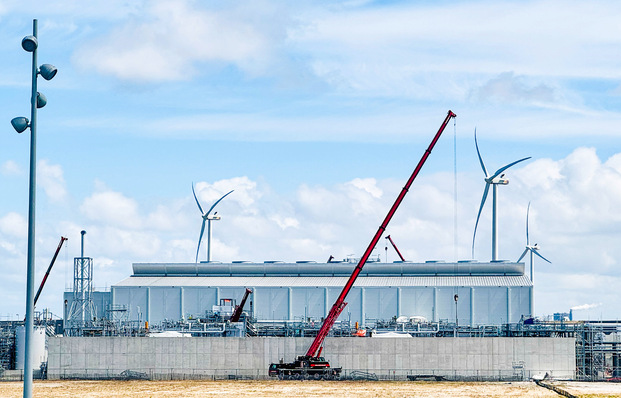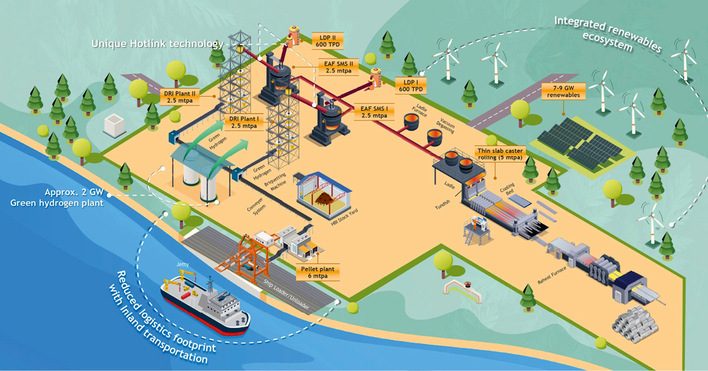Nikola Motors is on the right track. Various test trials of the Tre BEV battery-electric models are running successfully with customers like TTSI, Tiyaji Brothers (for Anheuser-Busch), Univar, Road One (for IKEA) and Covenant (for Walmart). So far, everything with 94 percent manufacturing capacity utilization. In the second quarter, 15 Trev BEVs were produced and 48 delivered. The preliminary quarterly turnover lay at 18.1 million USD.
The loss for the quarter lies at 173 million USD. So a minus of 0.41 USD (GAAP) or 0.25 USD (non-GAAP) per share. Included are the legal fees in association with company founder Trevor Milton in the amount of 13 million USD as well as stock-based compensation in the amount of 54.8 million USD. Also strongly increased freight charges of over 13 million USD were a factor in this. In cash and cash equivalents, Nikola had at the end of the second quarter 529.2 million USD at its disposal and additional equity lines (Tumim/3i) in the amount of 312.5 million USD – which together makes 841.8 million USD.
The acquisition of the battery manufacturer and supplier Romeo Power for 144 million USD in Nikola shares still lay within the existing authorized capital of up to 600 million shares. Issued were so far 433 million shares as well as 62 million option rights (employee shares and bonus programs) and 71 million shares set aside for convertible bonds. All these together are then 567 million shares with previously authorized capital in the amount of 600 million shares. Now, it could potentially become 800 million shares, since 66 percent of shareholders at the last annual general meeting voted in favor of this. The issuance of shares can now take place from time to time and bit by bit ATM (at-the-market), but that won’t come until 2023 or later, and certainly not at these severely depressed stock prices.
Romeo Power creates independence
Romeo Power was acquired in exchange for shares, so purely with Nikola’s own equity. Romeo should have the potential to sink the annual costs for batteries by 350 million USD by 2026. Together with Romeo Power (former top talent from SpaceX and Tesla had founded the company), Nikola plans to go double-track with the batteries. Romeo, with its production site in the US, is to serve this market, while battery supplier Proterra is to be Nikola’s partner for the European market.
The price to purchase Romeo Power, an equivalence of 144 million USD, corresponds to just nine percent of the stock market value achieved in the meantime. On top of that, Nikola is giving a liquidity grant in the low two-digit million-dollar range to Romeo. What does Elon Musk (Tesla) think of this? Isn’t he himself planning to introduce a battery-electric truck?
Establishment of an H2 infrastructure
In the second quarter, six beta copies of the hydrogen-powered Tre FCEV were sent out for testing. Mass production of these will not start until the second half of 2023. Before that, the H2 fueling stations must be in place. An installation, according to information by the company, takes more than a year, because of the approval process.
So far, the company has launched three H2 fueling stations in California, which are to be in operation the fourth quarter of 2023. So perfect timing in solving the chicken-and-egg problem and freeing hydrogen production. Nikola will operate some H2 fueling stations itself, but also many with partners. Partnerships for this with oil and gas companies are still to come in the current second half of the year.
Modern workspace
NIKOLA_TRE_BEV 7.jpg
Source: Nikola
The Biden administration’s climate act is creating US-wide tax incentives that stretch up to 3 USD per kg of hydrogen. In California, there is an additional subsidy of 3 USD on top, so in total 6 USD per kg can be gotten there. Nikola is assuming that it can self-produce hydrogen for 3 USD per kg. That makes for a very high profit margin.
The factory in Coolidge, Arizona is to have a capacity of 20,000 trucks at the end of the first quarter of 2023 – of both types, the battery-electric and the hydrogen-powered. And it is to be 45,000 units altogether in 2024.
Meanwhile, it became known that out of the cooperation with Iveco in Ulm, Baden-Württemberg – a contract manufacturing agreement – is to now come a closer joint venture, with joint engineering and joint production. My take: Something is coalescing there. Is Iveco, or alternatively parent company CNH, increasing the share in Nikola, which has been 6.7 percent for some time now?
Lohscheller joining the presidents
Board chairman Mark Russell – he pulled Nikola out of rough water (holds about 9.6 percent in Nikola, a value of 260 million USD) – remains on the supervisory board, but will leave his post of CEO to Michael Lohscheller on January 1, 2023 (see also H2-international August 2022). Lohscheller had led the refurbishing of Opel, which today is part of Stellantis. Steve Girsky, former board chairman of GM Europe, is becoming chairman of the supervisory board at Nikola.
Food for speculation
Interesting in this context is that it was General Motors (GM), who was interested in a cooperation with Nikola at the time of CEO Trevor Milton, that was spoken ill of. As it goes, they wanted to build a hydrogen-powered SUV together, and GM was to receive a Nikola share package equivalent to the value of the activities (production/contract manufacturing). The deal fell through for a number of reasons, which are to be found in Milton’s personage.
Could perhaps a cooperation offer itself again, though, with solid support from the top managers of Nikola? This already sounds propitious, since Nikola’s strategy, to offer electricity and hydrogen itself as an energy solution (consumable) and to establish a unique infrastructure network for this, is gaining imitators. Getting involved could give it some speed.
What if Tumim/3i, a VC fund, has started or plans to look for another address for the investment in Nikola (maybe GM or CNH/Iveco?), passing the package on with a markup? Even Tesla could be interested in buying Nikola, after all arguments are weighed. While all vehicle manufacturers have their own strategies for commercial vehicles like trucks, they may find joy in strategic investments in infrastructure and alliances.
Nikola formally offers itself for all this, as the listed market value of 2.6 billion USD is far from the earlier, majorly overstated assessments and there is the opinion that the current stock market value now only reflects the battery area. Former GM managers Lohscheller and Girsky will ensure a new reputation for the company. Does Trevor Milton know something more? He very recently bought 3 million more shares at the price of 5.80 USD per share.
Summary
The stock market still needs convincing, as the share price went from under 5 USD to over 8 USD and then back down below 6 USD. Again were a whopping 78 million shares (mid-August) sold short. If something spectacular were to happen, then Nikola could again be valued completely differently and much higher. Overall, everything is on track. Highly speculative with high hopes.
Disclaimer
Each investor must always be aware of their own risk when investing in shares and should consider a sensible risk diversification. The FC companies and shares mentioned here are small and mid cap, i.e. they are not standard stocks and their volatility is also much higher. This report is not meant to be viewed as purchase recommendations, and the author holds no liability for your actions. All information is based on publicly available sources and, as far as assessment is concerned, represents exclusively the personal opinion of the author, who focuses on medium- and long-term valuation and not on short-term profit. The author may be in possession of the shares presented here.
Author: Sven Jösting, written August 30th, 2022






